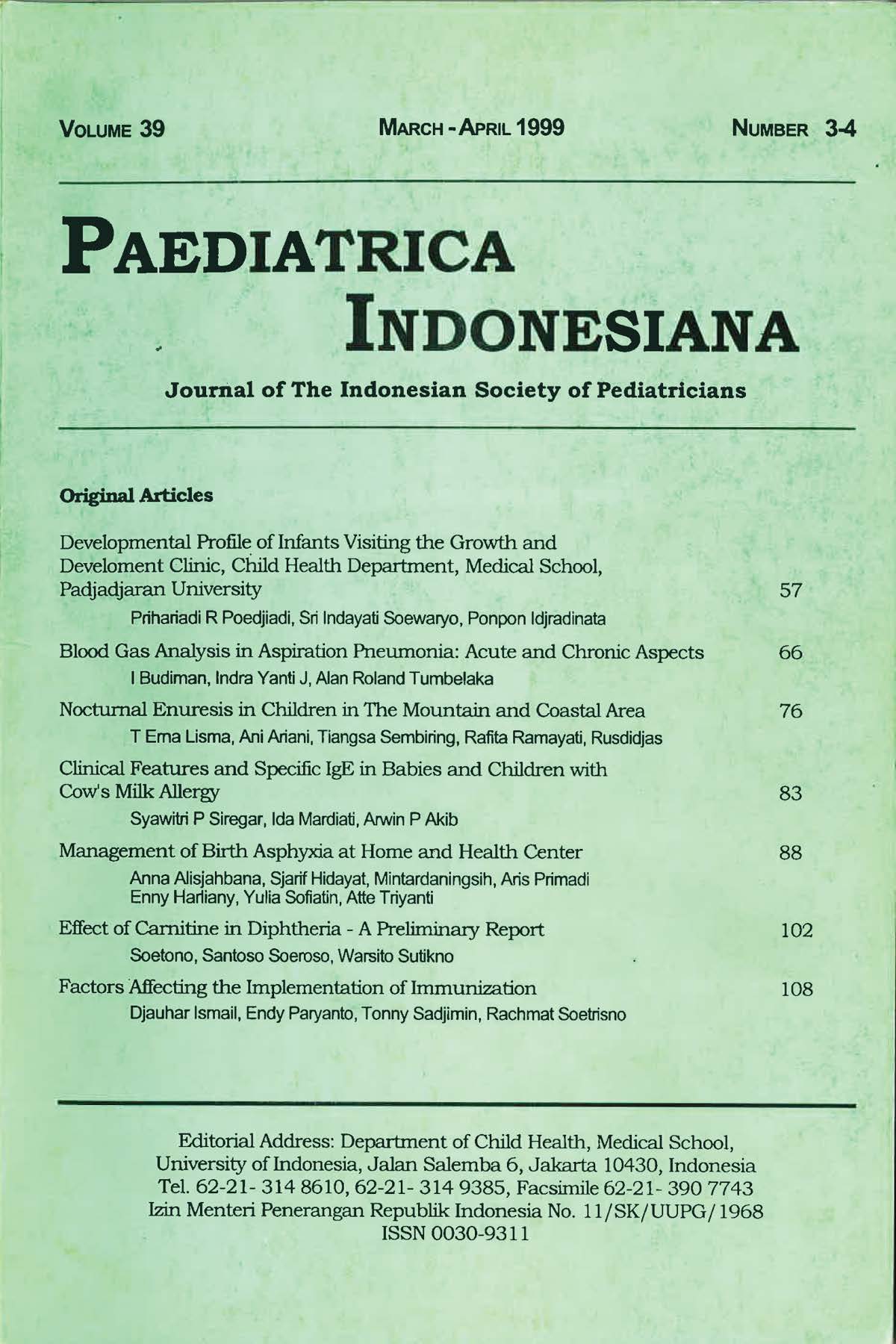Management of birth asphyxia at home and health center
Abstract
Birth asphyxia is the main cause of death in newborns and is an emetgency situation that need immediate action. In Indonesia more than 60% of deliveries are attended by traditional birth attendants. Although infant mortality has decline significantly in the last decade, the neonatal component of IMR however remain the same. The ddinition of birth asphyxia recommended by World Health Organization is: A newborn infant who does not cry and who does not breath or has poor breathing efforts soon after birth. The paper present the result of a fieldstudy conducted in Tanjungsari (West java). The study is part of a multicountry study conducted in four countries organized by World Health Organization. TBAs were trained in the basic steps of resuscitation starting from drying, stimulation, suction and providing. Positive Pressure
Ventilation using a tube and mask device on infants with birth asphyxia Community midwives were trained in the same procedure and additional training for cardiac massage. Team work between TBA and CM was stressed. More infants with birth asphyxia survive, one fr sh Still born
infant survive after vigorous resuscitation. Although the result looks promising, close supervision and regular refreshing courses are necessary to have a significant impact on neonatal mortality.
Authors who publish with this journal agree to the following terms:
Authors retain copyright and grant the journal right of first publication with the work simultaneously licensed under a Creative Commons Attribution License that allows others to share the work with an acknowledgement of the work's authorship and initial publication in this journal.
Authors are able to enter into separate, additional contractual arrangements for the non-exclusive distribution of the journal's published version of the work (e.g., post it to an institutional repository or publish it in a book), with an acknowledgement of its initial publication in this journal.
Published 1999-04-30













